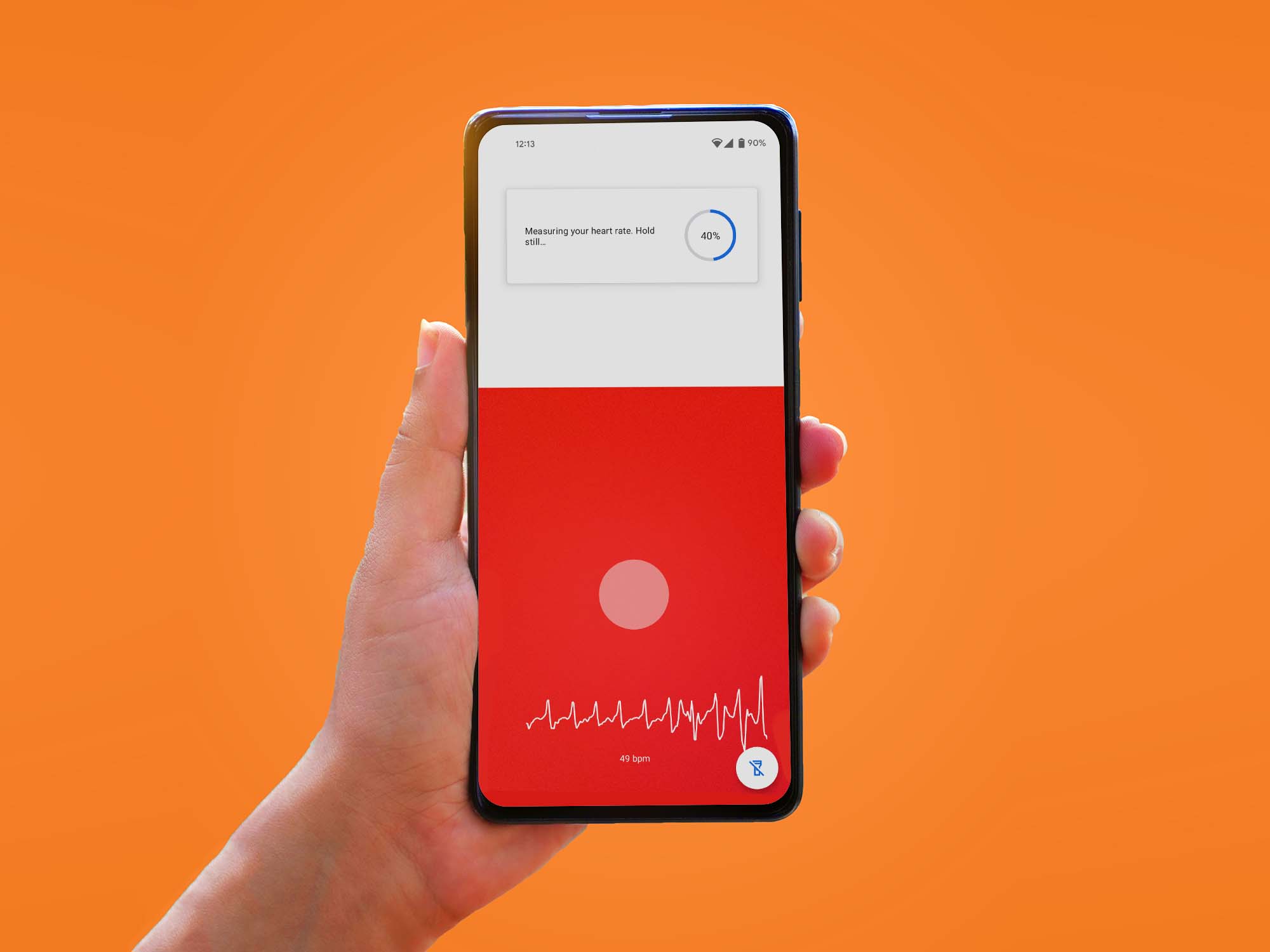

You might have been tempted to get a smartwatch or a highly feature-packed fitness tracker to get a better understanding of your health. But there are certain biometric readings you can measure right from your smartphone and don’t require you to splurge in additional gizmos.
As you might already know, your phone can count your steps and track your sleep, but it can also get a reading on your heart rate. To do that, your handheld device uses its rear camera to estimate beats per minute based on the color changes in your fingertip, which indicate the pumping of blood through the capillaries.
Whether you’ve left your heart rate tracking wearable at home or you don’t own one in the first place, being able to take this important measurement only with your phone is a handy alternative.
Google Fit
The heart rate tracking feature is now live in both Google Fit for Android and iOS, so you’re not limited by the platform that you’re on. Open up the app and you’ll see a dashboard showing some key health and fitness statistics, including the calories you’ve burned and the steps you’ve taken today.
[Related: 9 of the best health and fitness apps for your Apple Watch]
To scan your heart rate, open the Browse tab (the icon looks like a bulleted list), go to Vitals, and tap Get started on the Check your heart rate card. The app will take you step-by-step through the process, and will give you instructions if you need to readjust your finger on the lense or apply more or less pressure. On the screen, you’ll see a progress circle telling you how much data the app has gathered. When it reaches 100 percent, you’ll get your reading, which you’ll be able to save by tapping Save measurement.
From the Browse tab in the app, you can choose Vitals then Heart rate to see your statistics over time. You can also add a reading manually (if you’ve taken one on a different device, for example), by tapping the + (plus) button in the top right corner of the screen.
Instant Heart Rate
Instant Heart Rate for Android and iOS is an app built entirely for the purpose of measuring your heart rate on your phone. If you want to aggregate the readings to your other health and fitness data, you can sync the platform with Google Fit or Apple Health.
As soon as you open the app for the first time, it will tell you exactly what you need to do in terms of positioning your finger on the rear camera and keeping it steady to get an accurate reading. You’ll see your heart rate in real-time and then after a few seconds, you’ll get a finalized measurement.
To track your heart rate over time and export the statistics into other apps, you’ll need to sign up for a free account inside the app. Extra premium features, including tips, advice, and workout programs, are available for $10 a month.
Welltory: Heart Rate Monitor
Welltory: Heart Rate Monitor for Android and iOS starts with heart rate readings but then goes beyond that. For $13 a month, the app can bring you personalized insights into your heart health, sleep patterns, stress, and more.
But if you don’t want to add yet another subscription to your list, you can stick to measuring and getting feedback on your heart rate and your heart rate variability—the gaps between beats—which is free of charge. The platform will invite you to measure both as soon as you open it, and you can take readings again at any time by tapping the button at the bottom of the app’s main dashboard (it looks like a heart rate reading).
The app also syncs up nicely with a variety of different wearables if you want to gather more data.
Cardiio
If you’re after something a bit more comprehensive, then Cardiio for iOS delivers. It gives you heart rate readings, of course, but also plenty of analysis of your beats-per-minute over time, as well as workout suggestions and extra insights into your wellbeing.
[Related: A beginner’s guide to Google Fit and Apple Health]
The platform will prompt you to get a reading when you open it, and you can collect more of them by tapping the Measure option. As with the other apps, Cardiio will also give you full instructions when it comes to taking your heart rate readings, so you don’t have to worry about messing it up. You’ll be able to see all your logged data on the History tab, and if you want to dig deeper you can get interpretations of your overall fitness levels under the Insights tab.
More features—including comparisons with other people of your age and gender, and full pulse waveform logging—are available for a one-off fee of $10. Unfortunately, the app isn’t available on Android.
